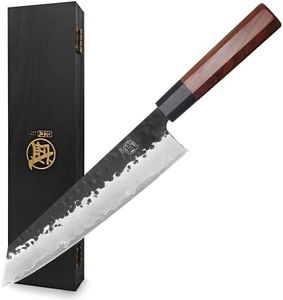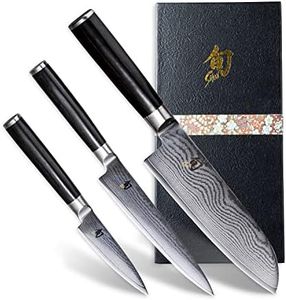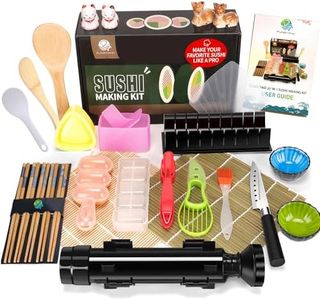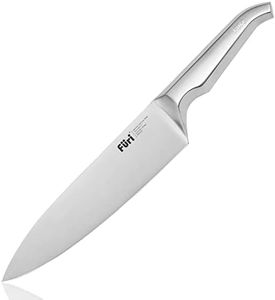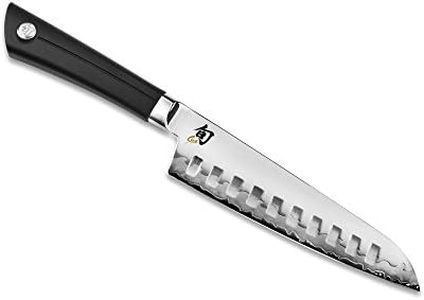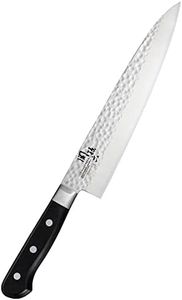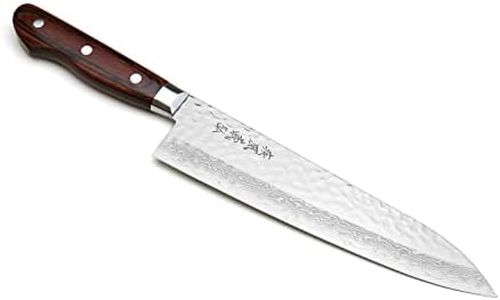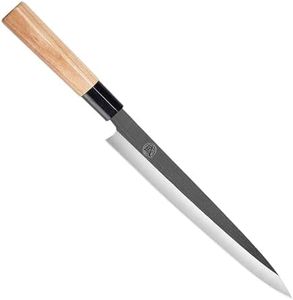We Use CookiesWe use cookies to enhance the security, performance,
functionality and for analytical and promotional activities. By continuing to browse this site you
are agreeing to our privacy policy
10 Best Sushi Knives
From leading brands and best sellers available on the web.Buying Guide for the Best Sushi Knives
Choosing the right sushi knife is essential for anyone who takes sushi preparation seriously, whether you're a home cook or aspiring chef. A well-picked sushi knife will make slicing fish and preparing other ingredients much easier, allowing for cleaner cuts and better presentation of your sushi. Understanding the types, materials, and features of sushi knives will help you select a model that's comfortable, effective, and suits your cooking style. Take the time to assess your needs and preferences before making a choice.Blade TypeThe blade type refers to the shape and style of the knife, which impacts how it's used in sushi preparation. The most common sushi knives are Yanagiba (long and thin for slicing fish), Deba (thicker for filleting fish), and Usuba (thin and flat for vegetable slicing). Yanagiba is preferred for slicing raw fish into sashimi or nigiri, Deba is robust enough for cutting through bones and filleting, while Usuba is great for precise vegetable work. Choose a blade type based on the tasks you perform most: if you mostly slice fish, go for Yanagiba; for breaking down whole fish, Deba is best; and if you're working with vegetables, Usuba will serve you well.
Blade MaterialBlade material affects sharpness, maintenance, and durability. The most common materials are high-carbon steel and stainless steel. High-carbon steel blades can be sharpened to a finer edge and hold sharpness longer, but they require more careful maintenance to prevent rust. Stainless steel blades resist rust and are easier to maintain but might not be as sharp or as long-lasting as high-carbon varieties. If you prioritize easy care, stainless is ideal; if you value sharpness and are willing to do some upkeep, high-carbon steel is a great pick.
Blade LengthBlade length has an impact on control and the types of cuts you can make. Common lengths for sushi knives range from 8 to 12 inches. Shorter blades provide more control and are easier to handle for beginners or those working in smaller spaces, while longer blades can make cleaner, single-stroke cuts in larger pieces of fish, which is especially important for presentation. For home use or if you're new to sushi making, a shorter blade (8-10 inches) is manageable; experienced users preparing larger fish may prefer a longer blade.
Edge Grind (Single vs. Double Bevel)Edge grind refers to how the knife edge is shaped. Traditional sushi knives usually have a single-bevel edge, meaning only one side is sharpened. This creates extremely precise cuts and is favored in Japanese cuisine, particularly for fish slicing. Double-bevel edges are sharpened on both sides, making the knife easier to use and maintain, suitable for general kitchen tasks. If authenticity and ultra-precise fish slicing are important, opt for a single-bevel knife. If versatility and ease of use are your goals, a double-bevel knife is more forgiving.
Handle TypeHandle type affects comfort, grip, and how the knife balances in your hand. Traditional Japanese handles (Wa-handle) are lighter, often made of wood, and have a distinct shape that encourages proper cutting technique. Western handles are heavier, sturdier, and feel more familiar to many users. Choose a handle style that feels secure and comfortable in your hand—if you want a lighter touch and an authentic experience, go for Japanese handles; if you prefer a more substantial grip, pick a Western style.
Maintenance RequirementsMaintenance requirements involve how often and easily the knife needs to be sharpened, cleaned, and protected. Some knives, especially high-carbon steel models or those with wooden handles, require careful hand washing, drying, and occasional oiling. Stainless steel and synthetic handles need less attention. Think about how much time and effort you’re willing to spend on upkeep—choose accordingly so your knife stays sharp, safe, and beautiful for years.
